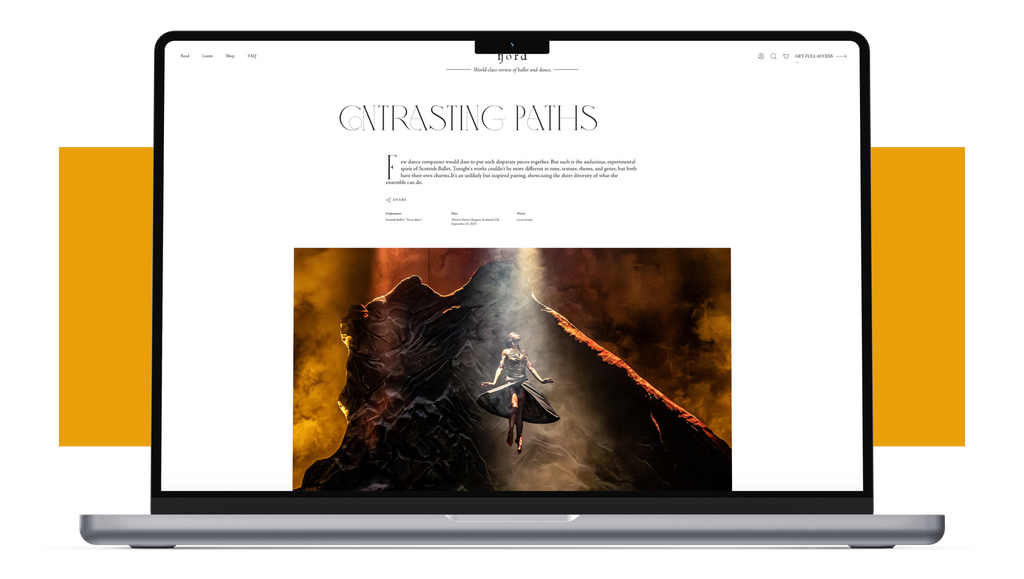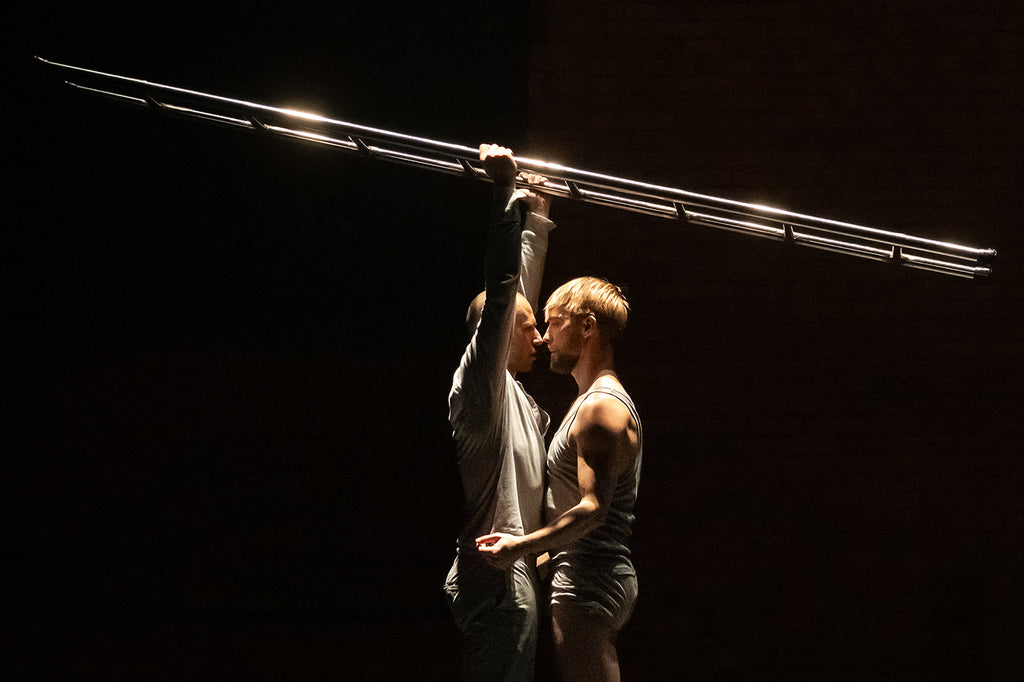Modern Dance Hold’em
Lassoing is a surprising through-line for a Martha Graham Dance Company performance. The theme steps generally tend towards the child-birthing variety: contractions and deep squats.
Continue Reading
World-class review of ballet and dance.
The first few minutes of Pontus Lidberg’s “On the Nature of Rabbits,” confounds the viewer with a series of inexplicable images in quick succession. First Lidberg is seated in repose near a small stuffed rabbit, as if a child in deep contemplation of a beloved toy. But soon Hussein Smko breaks into the serenity of the scene, lumbering across the stage. Odd shapes protrude from Smko’s body, giving his figure a monstrous outline. He dislodges a black water balloon from underneath his shirt and offers it to Lidberg. The balloon is leaky. Colleen Thomas arrives with focused determination, regal and authoritative in a grey satin slip dress, and holds out a glass to catch the liquid leaking out in an arced stream. Spotlights come on and off, illuminating each study in small pools of light.
We are at the Joyce Theater in Manhattan, but we are also in Lidberg’s dream world.
Performance
Place
Words



“Uncommonly intelligent, substantial coverage.”
Already a paid subscriber? Login

Lassoing is a surprising through-line for a Martha Graham Dance Company performance. The theme steps generally tend towards the child-birthing variety: contractions and deep squats.
Continue ReadingAs a dance viewer, it’s easy to get swept up in the grand movements in a piece, glossing over the finer details.
Continue ReadingHubbard Street Dance Chicago was in New York for a two-week run March 12–24 at the Joyce Theater, a venue that consistently programs excellent smaller dance companies in its 472-seat theater.
Continue ReadingThe legendary Cuban dancer Carlos Acosta trained relentlessly to come out of retirement last year for a performance of classical works in celebration of his 50th birthday at the Royal Ballet, where he spent most of his professional career.
FREE ARTICLE
comments